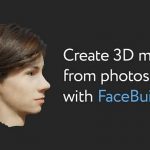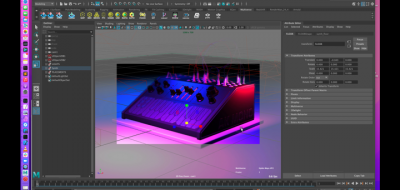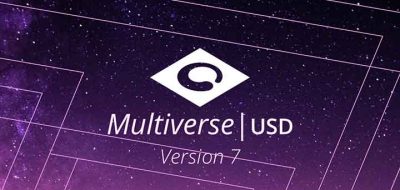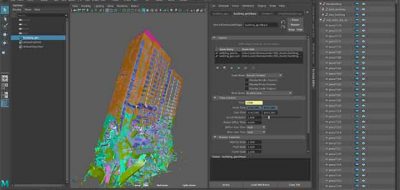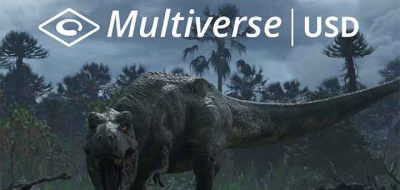J Cube’s Multiverse also adds support for Redshift and a host of other features in Version 6.5.
Multiverse USD allows users to work non-destructively in layout and look-dev when creating complex scenes with layering compositions & overrides. Version 6.5 of Multiverse adds a new procedural USD data importer and auto-sync for round trips between USD and Autodesk Maya.
Also added are unified rendering support with Redshift, full support for USD asset resolution, USD v20.08 NSI integration, embedded Hydra path tracing viewport powered by 3Delight, new documentation, updated Python API, and advanced integration for Apple Metal.
J Cube releases Multiverse|USD version 6.5
Building on the widely successful adoption of version 6 with its novel end-to-end multi-threaded architecture, in this cycle, Multiverse has progressively added new features such as improved writing of USD data, better UX, and extended inter-op workflows for motion- capture with Vicon Shogun and for FX with Houdini Solaris.
Interchange possibilities with other DCC apps have increased, in particular with Blender, Unreal, and Unity. Rendering has also extended to include Redshift, Renderman, and VRay, making Multiverse truly render-agnostic. Finally, macOS integration has improved thanks to Metal API integration and support of iOS and AR workflows in the Apple ecosystem.
Highlights of Version 6.5
- USD Data Importer — Added support for importing USD data from a loaded Multiverse Compound directly from the MEOW interface. Currently supports polygon meshes, transforms, and cameras. Imported data is fed from a Multiverse compound preserving animation, and changes to the resulting Maya objects can be written back to USD as sparse overrides.
- Auto-sync Imported Data Back to USD — Sparse overrides written from imported objects can be automatically added as a new layer into the original Compound node allowing for a full data round trip from Maya/ OtherD to USD, into Maya and back to USD.
- Redshift Support — Added support for rendering with Redshift on Windows and Linux. Featuring complete support for all Redshift primitives: polygons, hair, point clouds, and instancing/point instancing of any previous types. All motion blur methods are supported too: velocity, acceleration, linear, and deformation motion blur. All of the Multiverse overriding methods for attributes and materials are supported.
- Improved VRay Rendering — A large number of improvements on VRay rendering are available with this version.
- Integrated Path Tracing Viewport with 3DelightNSI — Added out-of-the-box integration of the 3DelightNSI rendering library in the Multiverse Hydra NSI viewport on Windows, Linux, and macOS. This offers unlimited threaded rendering, watermark-free in the Maya viewport, and allows the rendering of any scene, with the only actual limit being the system’s memory.
- Layers Muting — Added support for muting layers in a Multiverse Compound. This allows anyone to quickly inspect the result of the composition of different combinations of layers and offers a friendly way to assemble layered setups with e.g., sparse overrides.
- USD Asset Resolver Support — Added support for USD asset resolvers. Along with the legacy file-based approach, Multiverse can now resolve asset paths using a USD asset resolver. Users can choose the ArDefaultResolver plug-in or provide a custom resolver of their own.
- Select Ancestors from Marking Menus — Added ability to select hierarchy ancestors for the currently selected item in the viewport via Maya Marking Menu.
- USD 20.08 Support — With version 6.5.0 of Multiverse, we have updated USD libraries to version 20.08, this provides the latest and greatest USD support on all Maya versions and platforms.
- New Documentation — Added new documentation that works both online and offline in addition to offer a better search and more consistent readability.
- No Temp Files when Rendering — As of this version Multiverse does not write anymore temporary files when rendering. This has been updated for all supported renderers.
Pro Version features now available in 6.5.0:
- Added support for rendering with VRay GPU — introduced in v6.4.3
- Added support for framing the currently selected item — introduced in v6.4.3
- Added new marking menu to create a transform override on the currently selected item — introduced in v6.4.3
About Multiverse.
Multiverse enables anyone to non-destructively author, layout, and look-dev complex 3D scenes with layering, compositions & overrides. Stream interactively with Hydra-based viewports for previews and playback—Inter-op with USD-ready DCC apps and game engines. Render procedurally with low TTFP with all major production rendering engines.
Designed to deliver an easy and logical workflow to artists users under tight work deadlines and budgets.
Featuring UI and UX that are clear, well thought, and pleasant.
Ready for deployment in production environments of any scale, with a Python API that is straightforward to use and integrate, abstracting the vastness of the USD APIs.
Multiverse | USD is available in two versions:
- Pro — with mission-critical support services to meet the most demanding production needs,
- Free — fully-featured, indie-friendly, commercially usable, and completely free: its only requirement is an internet connection.
Download Free, Purchase Pro
- To download the Free Version and read more about Multiverse go to https://multi-verse.io
- To purchase the Pro Version and check our pricing table go to https://multi-verse.io/buy, or contact us directly at sales@j-cube.jp
To contact resellers:
- Japan — Crescent Inc and Born Digital
- China & S/E Asia — Jadason Technology
- Rest of the world — sales@j-cube.jp

